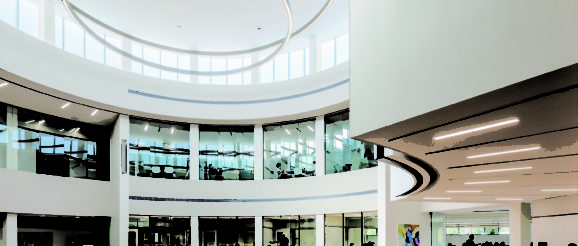Projection and Manifestation: the Art of Design for Innovation

Discovery and creativity aren’t always the result of a linear process, but increasingly, demands for new solutions, products, and services have joined social forces interested in immediacy. Academia is invigorating education in response by shifting classroom experiences from passive to discovery-based learning experiences that include analysis, hypotheses, and feedback loops as fundamental. Buildings designed for lectures and individual assignments don’t easily accommodate mapping strategies, group work sessions or building representations of ideas. How do architects create environments that empower people and help them achieve their goals? How are architects supporting academics prepare visionary thinkers? What is new and different about the process used in designing places where innovation happens, and innovative thinkers are educated?
One way architects can help is through ideation, which is a step in the creative process where needs and possibilities are conjoined to form a concept. For ideation to work well, a large number of considerations and input are valuable. These influences guide formulation of the types of spaces needed, or the arrangement of spaces into a system that forms the building. Architects and clients can work together to generate design ideas. This interaction has become more dynamic as rapid prototyping has evolved as a part of architectural design.

Bryant University, Academic Innovation Center, Location: Smithfield RI, Architect: EYP
Historically, architects would listen to a client’s needs, list the spaces required, review the budget, evaluate the site, go to the drawing boards, and finally present a “design” to the client. This process was broadly linear. Today, however, technologies enable quick physical printing of models and interactive virtual realities which allow clients to get inside, move around and explore architectural concepts in ways not possible even a few years ago.

Bryant University, Academic Innovation Center, Location: Smithfield RI, Architect: EYP
When these activities are a part of the design process, architects and clients work collaboratively to give and receive feedback in a mutually beneficial process. Architects evolve the design concepts to better suit the client, and clients often evolve their own focus, strengthening both vision and implementation. Environments for innovation are created from a dynamic experience with intensive engagement. The buildings are, in fact, the product of innovation themselves.
The Author
 Kip Ellis, AIA, LEED AP BD+C, Lead Designer, EYPAE
Kip Ellis, AIA, LEED AP BD+C, Lead Designer, EYPAE
Kip brings a love of the history of American culture and its influence on architectural design on college and university campuses to every project. He specializes in the design of sophisticated science buildings that promote innovative learning while celebrating each institution’s unique culture and place. As a member of EYP’s STEM Research Team, he has provided strategic and creative contributions to many of EYP’s science education projects, as well as thought leadership on a significant number of planning and studies.
Kip writes and speaks on the special challenges and issues of designing for higher education for such organizations as Project Kaleidoscope (PKAL), the Society for College and University Planners (SCUP), Labs 21, and Tradeline. He shares his passion for design by leading design studios at the Boston Architectural College.
